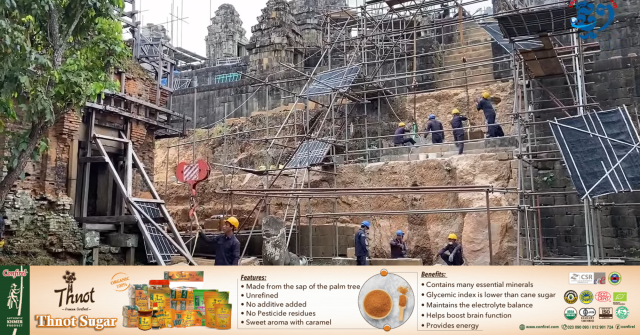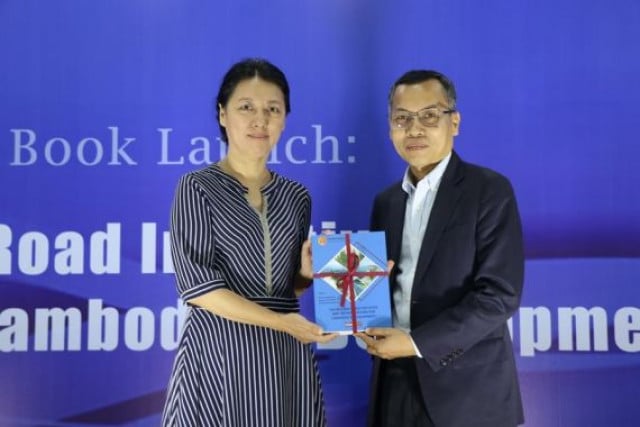Fixing Phnom Bakheng Temple’s Southern Section

- By Zul Rorvy
- February 3, 2024 2:00 PM
SIEM REAP — A location famous for watching the sunset, Phnom Bakheng is the first temple built on the site that would become Angkor when, toward the late 9th century, King Yasovarman I decided to relocate the kingdom’s capital northwest of the previous one at Roluos.
Situated on top of a hill next to Angkor Wat that would be built in the 12th century, Bakheng temple has been the object of multiple restoration projects over the years. They have been conducted by World Monuments Fund through funding from the U.S. Department of State.
_1706935838.png)
Caption: Cheav Phirum (R), an engineer at the Bakheng temple restoration, speaks to Zul Rorvy (L), a journalist from ThmeyThmey News. Photo: Thorng Broney
Cheav Phirum is an engineer currently involved in the restoration of the temple. He spoke of the work previously done and the ongoing restoration phase.
Zul Rorvy: Would you explain the issues and challenges that have come up during the restoration of the temple, which has been a major endeavour?
Cheav Phirom: Beginning in October 2019, the restoration aimed to improve the structural integrity of the southern main staircase and the southwestern wall. Based on our investigation and research, the foundation of the staircase and the wall was crumbling and tilted. The temple of Bakheng demands unique attention when it comes to restoration as the temple was incorporated into the mountain bedrock itself.
_1706936082.png)
After cutting into the bedrock, builders of the past added layers of stones as the finishing touch to making the temple. Compact soil was also crammed in-between the temple’s stones and the mountain’s bedrock. So, when rainwater gets into that soil, it expands, pushing the stones of the mountain outward. Moreover, during restoration, we realized that the bedrock had been affected by erosion and was cracking due to water intrusion.
_1706936163.png)
Zul Rorvy: How have you approached this issue during restoration?
Cheav Phirom: To keep the water out, we have installed a drainage system on the third level of the temple. In addition, on the third, fifth and seventh levels, we have used a reinforcement method to help attach the temple’s stones to the mountain bedrock. Moreover, layers of special rubber were used in some areas to keep water out.
_1706936196.png)
Some portions of the bedrock itself have also needed our attention. Through drilling, we incorporated metal reinforcement and specialised adhesive materials to strengthen the bedrock. As for the temple, the most eroded laterite stones were replaced with new ones followed by the sandstones of the outer layer.
_1706936232.png)
Conducted in Khmer for ThmeyThmey News, the interview was translated by Ky Chamna for Cambodianess News.
To watch the original interview in Khmer, click here.
Read or watch more about the Bakheng mountain temple:
Phnom Bakheng: an Angkor Period Heaven on Earth
US Grants $450,000 for Bakheng Restoration
Stone by stone, the Bakheng Restoration Continues















